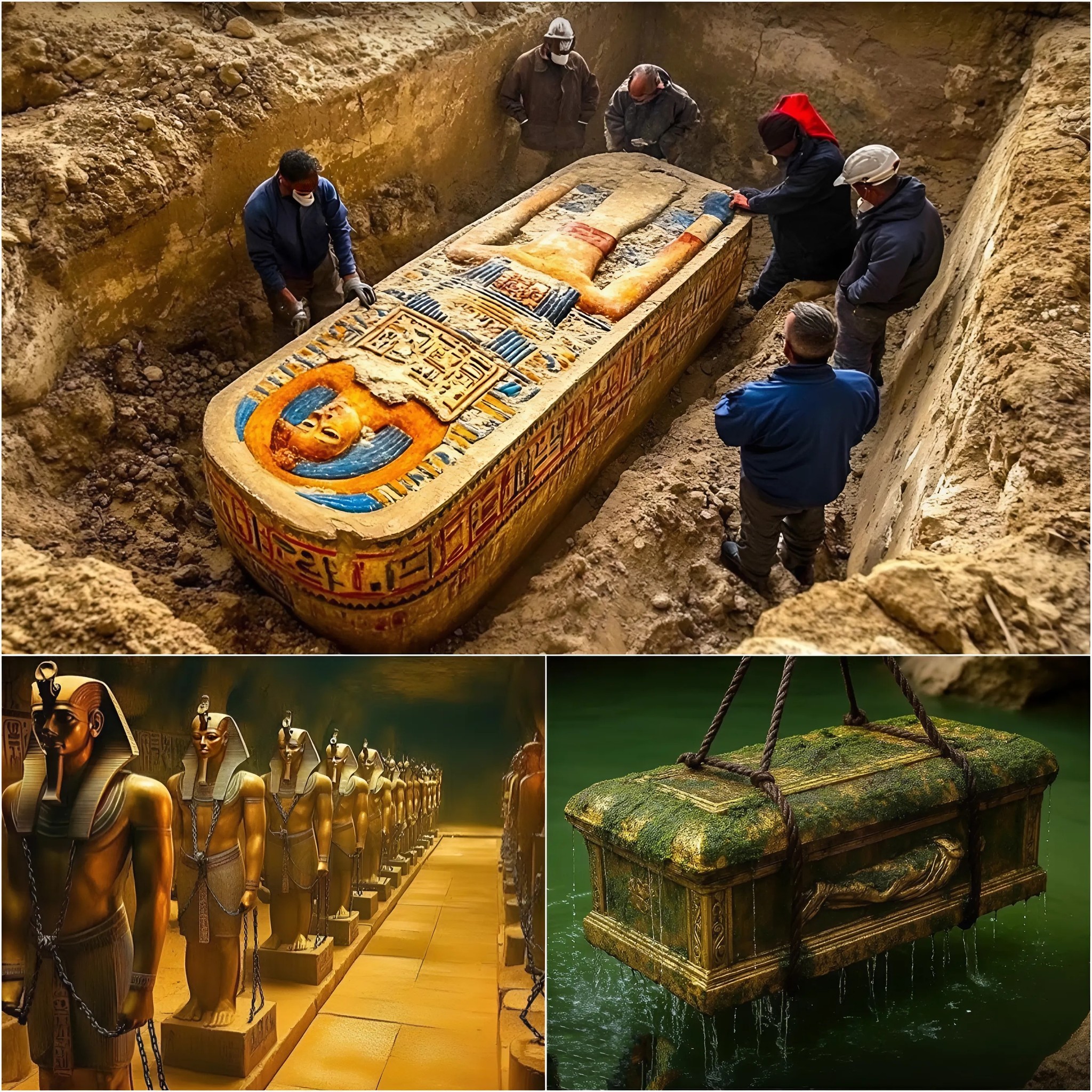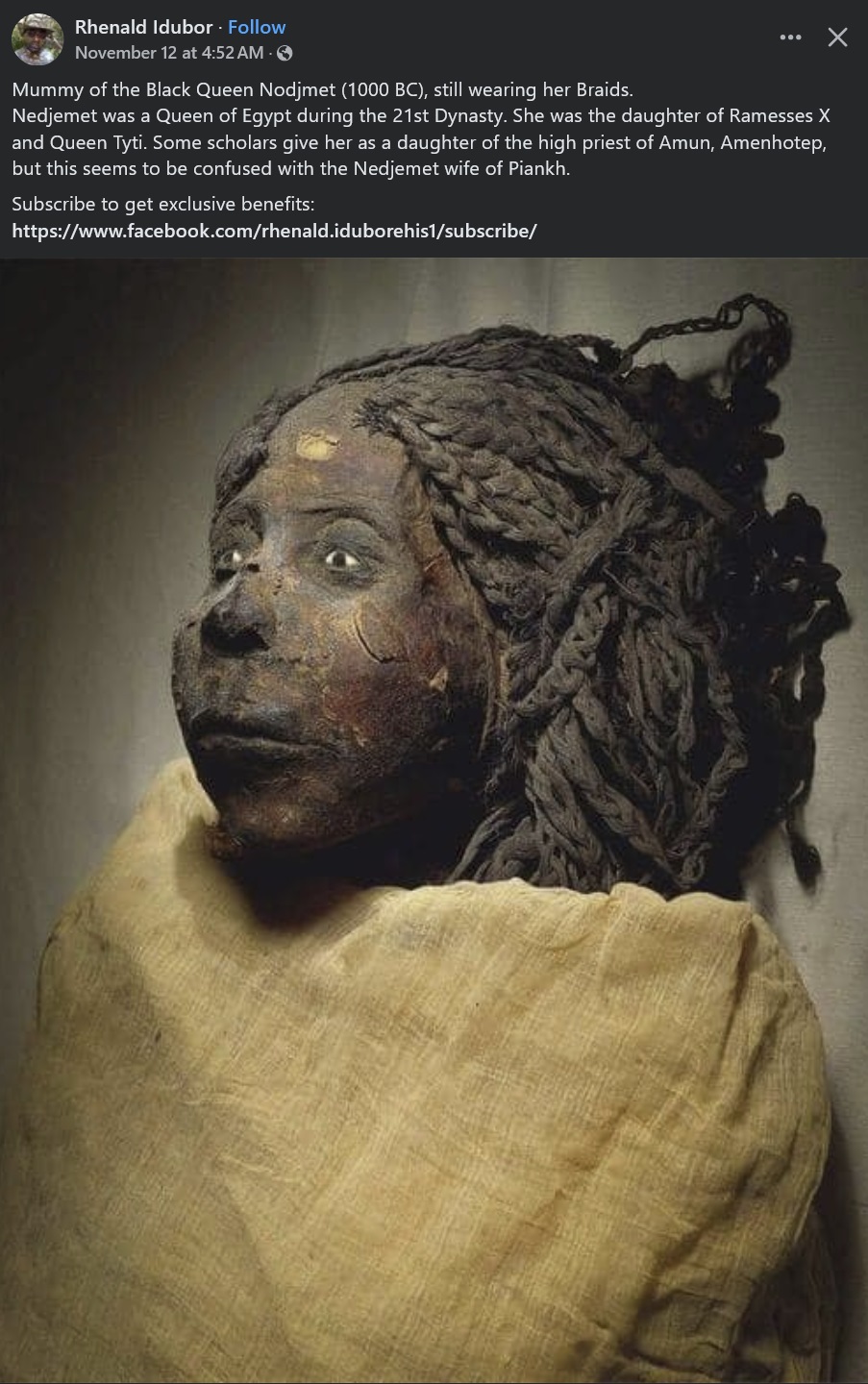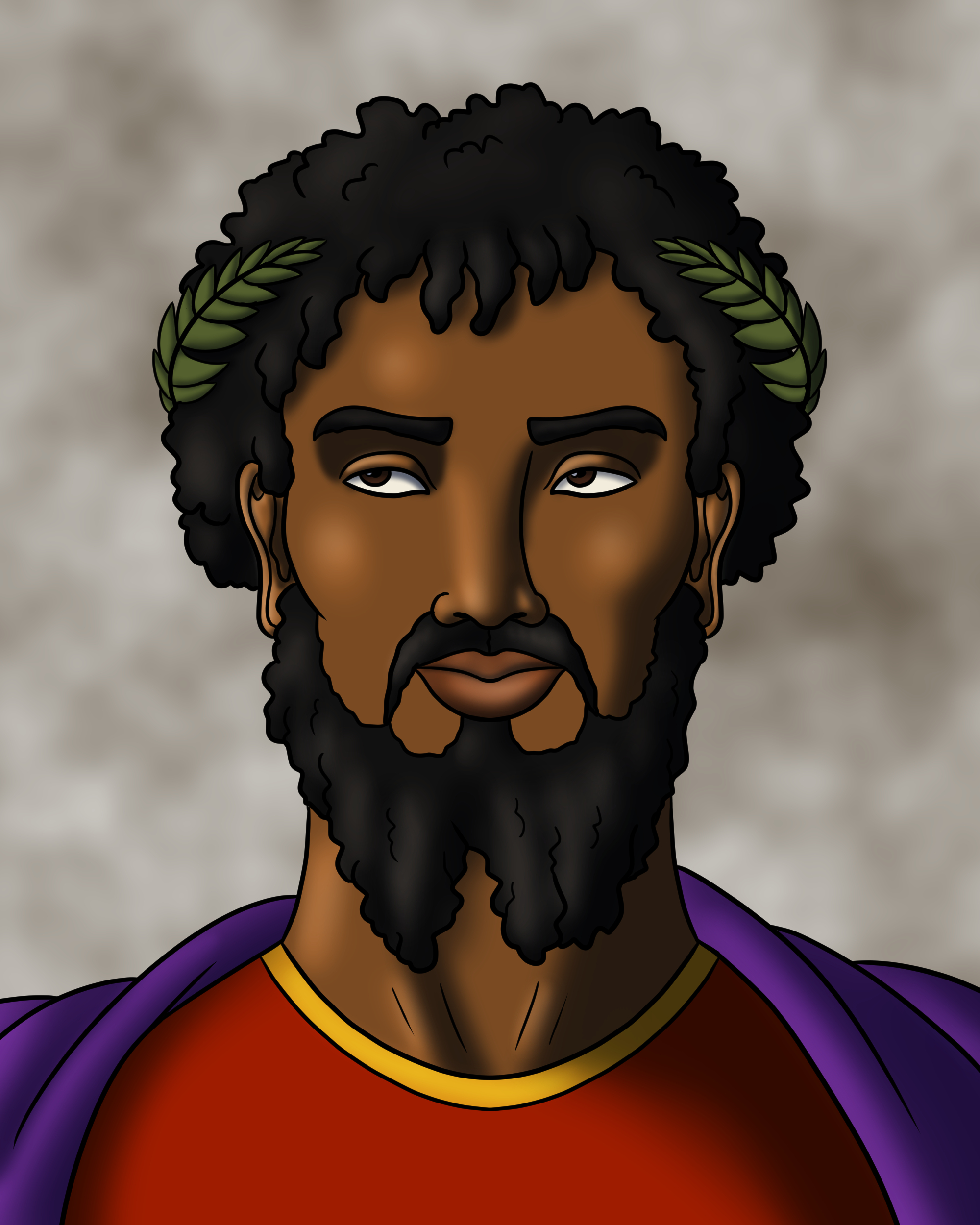Join the New Awakening for Black People (NAFBP) private group to learn our entire Black/Afrikan history covering the 4-corners of the world. Based on scientific research that gathers data from science, history, linguistics, archeology, anthropology, law documents, etc. The kind of data that either validates or invalidates what someone has said or written.
The NAFBP is on The Backroom Social Network, the sister site to this one owned by the same Black owner. It was designed for Black people to say what they mean without any backlash from other human species. If told you need an invite code to join, let me know and I will create one for you.
https://staging.thebackroom.social/
---------
Here's part of what you will be learning...
The Mummy of the Black Queen Nodjmet refers to the mummified remains of an ancient Egyptian queen named Nodjmet. She was a royal figure during the 25th Dynasty of Egypt, around the 8th century BCE. Nodjmet is most commonly associated with her marriage to Taharqa, one of the greatest kings of the 25th Dynasty, who ruled over Egypt and parts of Nubia.
Who was Queen Nodjmet?
Nodjmet was likely a queen consort, but there is some ambiguity about her specific title and role in ancient Egyptian royal hierarchies. She may have been the daughter of a powerful noble, and she is primarily known for her mummy, which was discovered in the 19th century.
Discovery of Her Mummy
The mummy of Nodjmet was discovered in 1844 in the Bubastis necropolis, located near the ancient Egyptian city of Bubastis (modern-day Tell Basta) in the Nile Delta. The mummy was found in a tomb that had been reused over the centuries, which was a common practice in ancient Egypt. The tomb also contained several other royal mummies from the 25th Dynasty, suggesting that the area was an important burial ground for the ruling family of that period.
Continues in the Comment Section Below...
#QueenNodjmet
#Mummy
#AncientEgypt
#25thDynastyJoin the New Awakening for Black People (NAFBP) private group to learn our entire Black/Afrikan history covering the 4-corners of the world. Based on scientific research that gathers data from science, history, linguistics, archeology, anthropology, law documents, etc. The kind of data that either validates or invalidates what someone has said or written.
The NAFBP is on The Backroom Social Network, the sister site to this one owned by the same Black owner. It was designed for Black people to say what they mean without any backlash from other human species. If told you need an invite code to join, let me know and I will create one for you.
https://staging.thebackroom.social/
---------
Here's part of what you will be learning...
The Mummy of the Black Queen Nodjmet refers to the mummified remains of an ancient Egyptian queen named Nodjmet. She was a royal figure during the 25th Dynasty of Egypt, around the 8th century BCE. Nodjmet is most commonly associated with her marriage to Taharqa, one of the greatest kings of the 25th Dynasty, who ruled over Egypt and parts of Nubia.
Who was Queen Nodjmet?
Nodjmet was likely a queen consort, but there is some ambiguity about her specific title and role in ancient Egyptian royal hierarchies. She may have been the daughter of a powerful noble, and she is primarily known for her mummy, which was discovered in the 19th century.
Discovery of Her Mummy
The mummy of Nodjmet was discovered in 1844 in the Bubastis necropolis, located near the ancient Egyptian city of Bubastis (modern-day Tell Basta) in the Nile Delta. The mummy was found in a tomb that had been reused over the centuries, which was a common practice in ancient Egypt. The tomb also contained several other royal mummies from the 25th Dynasty, suggesting that the area was an important burial ground for the ruling family of that period.
Continues in the Comment Section Below...
#QueenNodjmet
#Mummy
#AncientEgypt
#25thDynasty









